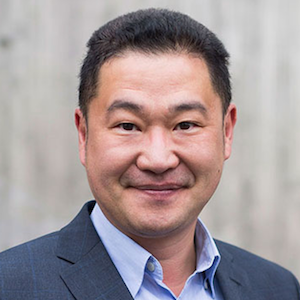Article
Repeated Low-Level Red-Light Therapy Reduces Myopia Progression in Children
Author(s):
Children in the RLRL group had less myopia progression and axial elongation compared with those in the sham device control group.
Mingguang He, MD, PhD

Repeated low-level red-light (RLRL) therapy at 100% power significantly reduced the progression of myopia in children in China compared with a sham device of 10% power, according to new findings.
The data from the trial show myopia progression was slowed by 0.167 diopter (D) and axial elongation was reduced by 0.101 over 6 months with RLRL treatment against sham.
“Our results provide new evidence for RLRL treatment as an effective and safe intervention against myopia progression,” wrote study author Mingguang He, MD, PhD, Centre for Eye Research Australia, Royal Victorian Eye and Ear Hospital.
Although previous findings supported RLRL therapy for myopia control, the open-label design may have led to bias in both the effectiveness and the observation of outcome measures. He and colleagues set out to conduct the first prospective, double-blind, randomized controlled trial to evaluate the efficacy of RLRL therapy compared with sham.
The trial was conducted from November 2019 to April 2021 at two hospitals in Baotou, China, with all eligible children randomized 1:1 to the RLRL group or sham device group. Children aged 7 to 12 years met criteria with myopia of at least -0.50 D, astigmatism of 1.50 D or less, and anisometropia of 1.50 D or less.
The treatment schedule consisted of three minutes per twice-a-day session, with an interval between sessions of ≥4 hours. The RLRL group was provided a desktop red light therapy device, while the sham device group received the same device with only 10% of the original device’s power.
The primary outcome was identified as myopia progression, or the difference between cycloplegic spherical equivalent refraction (SER) at baseline and the 6-month visit, with secondary outcomes being changes in axial length (AL) and uncorrected visual acuity (UCVA) in the same period.
For the analysis, a total of 111 children were included, with 56 children in the RLRL group and 55 children in the sham device control group. Both the mean age (10.3 years versus 9.86 years) and percentage of male patients (46.4% [n = 26] versus 53.6% [n = 30]) were similar between groups.
At the 6-month mark, data show the mean SER change was 0.06±0.30 D and -0.11±0.33 D in the sham device control group, with significant differences between groups (P = .003).
The multivariate GEE model showed children in the RLRL group had less myopia progression compared with the sham device control group (coefficient: 0.167 D; 95% confidence interval [CI], 0.050 - 0.283 D, P = .005).
Regarding secondary outcomes, investigators observed the mean AL change at 6 months was greater in the sham device control group (0.13 ± 0.10 mm) compared with the RLRL group (0.02 ± 0.11 mm; P <.001).
They added that AL changes were found to progress slower for children in the RLRL group compared with those in the sham device control group in the multivariate GEE model (coefficient: -0.101 mm; 95% CI, -0.139 to -0.062 mm; P <.001).
There were a total of 18 adverse events reported in 13 individuals, but none were determined to be related to the therapy.
“Further studies with long-term follow-up are needed to confirm our findings and evaluate the potential dose-response relationship and the optimal power intensity of the RLRL treatment for myopia control,” He added.
The study, “Myopia Control Effect of Repeated Low-Level Red-Light Therapy in Chinese Children: A Randomized, Double-Blind, Controlled Clinical Trial,” was published in Ophthalmology.





